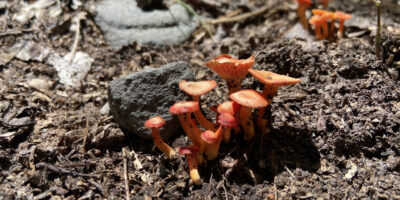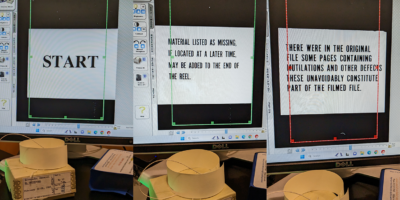By Ana Flavia Badue
In a previous blog post, I suggested many reasons for integrating research and teaching. But how can we do it? There are multiple ways of responding to this question, but if you are an instructor, the best strategy to reach all your students equally is to bring research (as a set of practices and skills) into your classroom. In this post, I will discuss three techniques to introduce students to an atmosphere of inquiry. First, we can bring our own research to the class and talk about the fields and discussions in which our findings are engaged. Second, we can introduce scholarly debates into the classroom to ask students to weigh in on those controversies. Finally, we can teach reading techniques that account for divergences and similarities between research methodologies, and thereby introduce students to research practices and processes, instead of just results, findings and conclusions. These are all useful ways of showing that knowledge is produced, and of democratizing training by making this production accessible to undergrad students.
Sharing our own research with students
Have you ever shared your own research ideas, questions, methods, findings, and outcomes with your students? Whenever I do this, the result is positive. After multiple classes, students still remember the examples I gave and they ask questions to know how to relate the current discussion with a “real” case, revealing that the examples help them to make sense of the content explored throughout the semester.
But isn’t sharing our research just another traditional form of “transmitting” knowledge, in a unilateral fashion, rather than creating a dynamic atmosphere guided by curiosity and questioning? This is why I adopt a more dialogical way of talking about my research. How? First, I decide where in the course calendar my research fits my other course material, so it refers to the discussions we were having before – instead of bringing it in multiple times over the semester. Then, I make it explicit that I am talking about a work in progress, and that their perspectives are very important because I take them as my interlocutors. If I am facing conundrums, presenting them to students is a great way of exposing the students to debates. I tell them what the questions are and I open the floor to their own interpretations. Because of this, the class environment becomes a place for intellectual debate and exchange, as students are invited to think of solutions and problems in a real research project, and the instructor benefits from reviewing their own assumptions, methods, ideas, arguments, etc.
Teaching, in general, is a great exercise in considering audience, not unlike presenting a paper at a conference. In front of me, I have an audience that is not familiar with my work, so I have to unpack concepts, explain assumptions and clearly guide the audience through my argument. Isn’t this what we do in our academic lives? Why not take our undergraduate students as interlocutors?
Introduce students to scholarly debates (not just to textbooks!)
Textbooks are great for their summary of the discipline, especially in introductory courses. But they usually present the field as consensual, and sometimes they work as if they were presenting facts. An alternative to this model is to assign journal articles on the themes, or to present divergent positions in class.
For example, I once took a graduate course in Archeology whose purpose was to introduce PhD students to materials that could be used to teach undergraduates. One of the strategies used by the professor was very inspiring. They lectured about the Anthropocene, and they emphasized that there were conflicting definitions and theories about it. After class, they assigned the reading of three pieces from popular science magazines and blogs. By the end of the semester, in the final essay, we had to write about the concept of Anthropocene, introduce the debate and conclude with an argument for one of the versions we found more convincing.
Use the C.R.E.A.T.E. method
If you feel that the primary literature on your subject may be difficult for undergraduates, you can adopt some strategies to accustom students to the format, language and rationale of texts from your field. The C.R.E.A.T.E. method (Consider, Read, Elucidate the hypotheses, Analyze and interpret the data, and Think of the next Experiment), created by Sally Hoskins and Kristy L. Kenyon, is a great tool to teach reading strategies for ongoing scholarly discussions.
This method consists of students reading and discussing a sequence of papers about one single scientific question in class and identifying divergences and similarities. In order to facilitate the process, the instructor has to select in advance around four primary research articles, excerpts and/or other media content that are connected and that reproduce a debate. In class, the instructor may give a short lecture (max. 15 min.) to give a background on the topic of the texts. Then, the rest of the section consists of students’ activities: they read each text in the order determined by the instructor; they annotate and map concepts, so that they can reconstruct the argument; after each text, they are asked to indicate the potential next steps and then they read the next one. Regarding which texts to select, you can pick articles published by one laboratory or publisher and identify the changes of the arguments throughout the publications. You can also choose articles of journals that publish responses from other authors in the same issue.
Students as Researchers
Before asking students to write a research paper, some scaffolding is necessary, considering that conducting research requires training. The three ideas above have precisely this goal. They enable the development of an inquisitive perspective because they invite students to be curious, to ask for evidence to support arguments, to doubt and to question in a constructive manner. Creating an atmosphere of inquiry in the classroom means encouraging students to produce (rather than reproduce) knowledge and to think critically.
In the next post, I will bring some examples of research-based teaching, when student learning occurs through their own research experience.









Leave a Reply